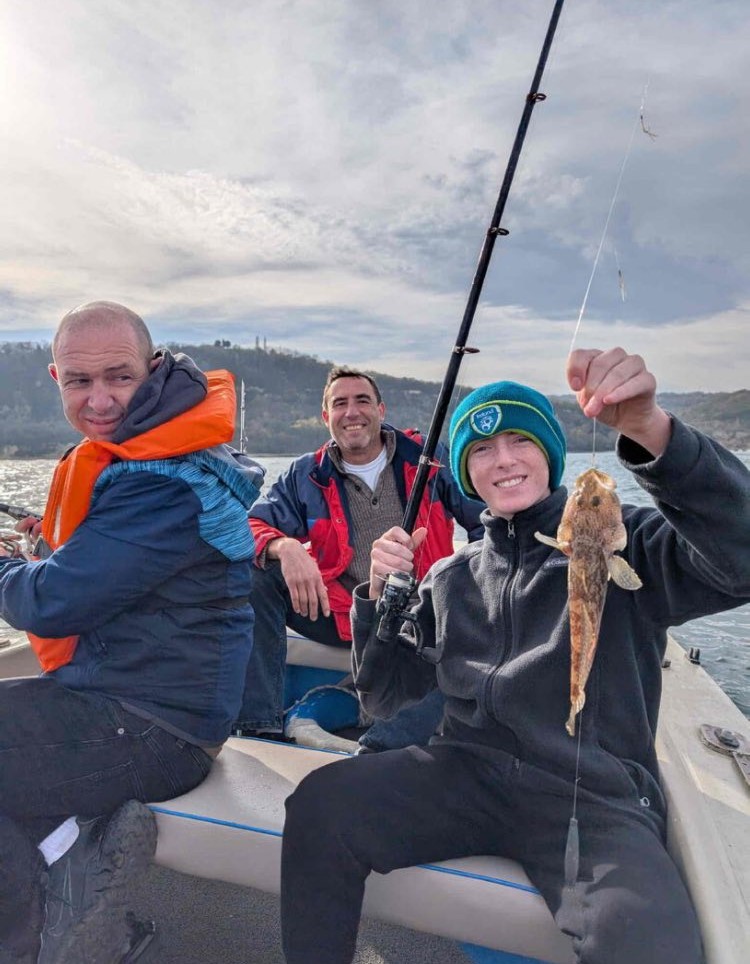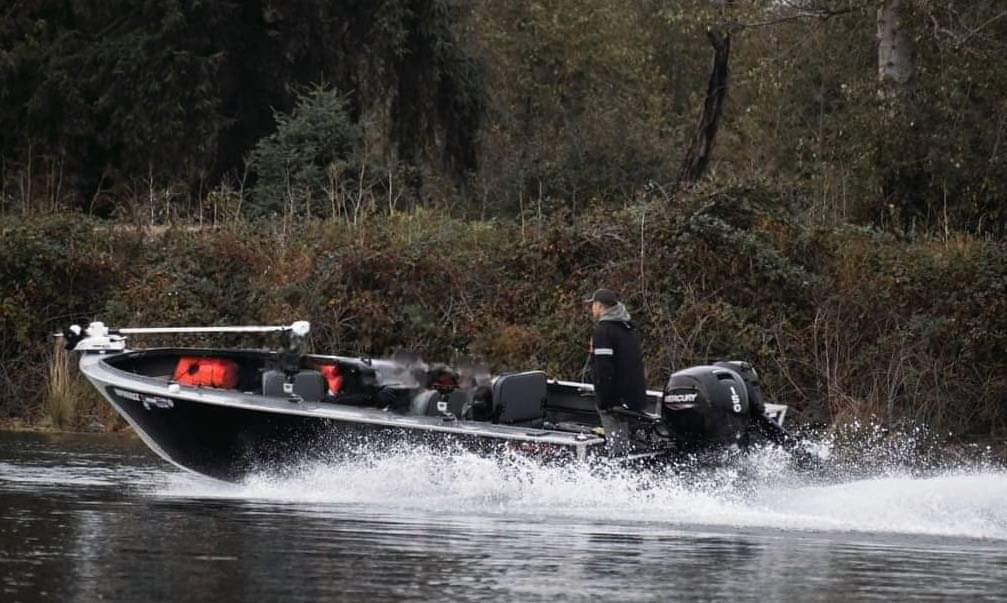Black Sea Trips
Snohomish River Pink Salmon
Kokanee & Trout Lake Adventure
8 Hour Trip – Winter Combo
8 Hour Trip – Fall Kings
Full Day Pontoon Fishing Trip
Acadia ICE FISHING
River, Lake Fishing in Anderson
Lake Hartwell Half Day
Full Day 7 Hour Trip
Lake Fishing in Lakeside Marblehead
Full Walleye Charter – Lake Erie
We started Captain Experiences to make it easy to book fishing and hunting guides around the world. With over 2,000 Damn Good Guides, our platform makes finding and booking a trip seamless. Head here to check out our trips.
The native distribution of yellow perch was originally driven by glacial melt along the Mississippi River. Their native range includes the Northern U.S. east of the Rocky Mountains and Canada but these fish have now been widely dispersed due to recreational and commercial interest. Yellow perch have also been introduced as prey for other popular fish like bass, walleye, musky, and northern pike. The US Fish Commission is responsible for introducing many species across the US in the late 1800s and early 1900s and yellow perch were no exception.

How to Locate Yellow Perch
Yellow perch habitat consists of vegetated shoreline waters and relatively shallow structures. Perch tend to form dense schools in shallow vegetation, because of their preference for small, weed-filled bodies of water. On rare occasions, yellow perch can be found in water deeper than 50 feet. Perch population can survive but are less abundant in deep, clear, open bodies of water. River populations of perch school up in protected waters just out of the current and moderately vegetated areas.
The ideal temperature range for catching yellow perch is between 63 to 77 degrees. However, yellow perch have faster growth rates when water temperatures range between 70 and 75 degrees. If water temperatures exceed 78 degrees yellow perch will be stressed and the bite will fall off. Catching fish in warmer waters also increases the likelihood of death after release.
When To Catch Yellow Perch
Perch are commonly active during the day and inactive at night except during spawning, when they are active both day and night. Yellow perch are small, lack agility, and have a top speed of only 12 mph which is why they are most often found in schools.
Schooling fish use sight to form school and yellow perch are no exception. The schools break up after dark and form again in the morning. A school of yellow perch holds between 25 and 200 fish which arrange themselves based on age and size. Older larger perch sometimes travel and hunt on their own. It is also common for males and females to form separate schools.
The diet of yellow perch varies based on size and age. Newly hatched perch feed almost exclusively on Zooplankton for the first year. After the first year, yellow perch begin to feed on small insects and eventually progress to crayfish, freshwater shrimp, and other small fish when they reach adulthood. Perch are not voracious eaters like bass, or musky, and typically only eat around 1% of their body at each meal. The most active feeding time for yellow perch occurs just before dark and is typically the most productive time to target them.
How to Catch Yellow Perch
Yellow perch are typically thought of as an easy fish to catch but being prepared will help you get consistent bites. The most popular bait setup used to target these is a jig head tipped with maggots, wax worms, and small shrimp. Like many other panfish, perch know their way around a hook. Allow time for them to take the bait before setting the hook, but wait to long and your bait will be long gone.
Perch inhabit a variety of areas within a given body of water so it’s important to try several spots in search of a school. The three primary factors to consider when looking for a good perch spot are environment, predators, and prey. Using these factors you can begin to find ideal spots that will consistently produce perch. When you approach each spot try to work your bait deeper at first then slowly work your way up. Once you find a school of perch, anchor the boat or use your trolling motor to stay on top of the fish.
Light or ultra-light tackle with small hooks, jigs, and lures will be the best setup for catching these little fish. Yellow perch are active year-round throughout their range and make them a great target in any season.
Ice Fishing for Yellow Perch
Ice fishing for perch is very standard procedure with short jigging poles or tip ups with tiny jigs or bait respectively. During early winter perch will be found near shallow mud flats, bays, and edges that hold the last remnants of vegetation. Larger bodies of water funnel perch into protected coves and flats while smaller lakes and ponds are more productive on edge of the shoreline dropoff.
Joey Butrus
Updated on July 28, 2023

June 28, 2023

March 8, 2022

January 19, 2021

November 7, 2023

April 26, 2022
Related Articles
November 10, 2022
December 5, 2022
November 10, 2022
Featured Locations
- Fishing Charters Near Me
- Austin Fishing Guides
- Biloxi Fishing Charters
- Bradenton Fishing Charters
- Cabo San Lucas Fishing Charters
- Cancun Fishing Charters
- Cape Coral Fishing Charters
- Charleston Fishing Charters
- Clearwater Fishing Charters
- Corpus Christi Fishing Charters
- Crystal River Fishing Charters
- Dauphin Island Fishing Charters
- Daytona Beach Fishing Charters
- Destin Fishing Charters
- Fort Lauderdale Fishing Charters
- Fort Myers Fishing Charters
- Fort Walton Beach Fishing Charters
- Galveston Fishing Charters
- Gulf Shores Fishing Charters
- Hatteras Fishing Charters
- Hilton Head Fishing Charters
- Islamorada Fishing Charters
- Jacksonville Fishing Charters
- Jupiter Fishing Charters
- Key Largo Fishing Charters
- Key West Fishing Charters
- Kona Fishing Charters
- Lakeside Marblehead Fishing Charters
- Marathon Fishing Charters
- Marco Island Fishing Charters
- Miami Fishing Charters
- Montauk Fishing Charters
- Morehead City Fishing Charters
- Naples Fishing Charters
- New Orleans Fishing Charters
- New Smyrna Beach Fishing Charters
- Ocean City Fishing Charters
- Orange Beach Fishing Charters
- Panama City Beach Fishing Charters
- Pensacola Fishing Charters
- Pompano Beach Fishing Charters
- Port Aransas Fishing Charters
- Port Orange Fishing Charters
- Rockport Fishing Charters
- San Diego Fishing Charters
- San Juan Fishing Charters
- Sarasota Fishing Charters
- South Padre Island Fishing Charters
- St. Augustine Fishing Charters
- St. Petersburg Fishing Charters
- Tampa Fishing Charters
- Tarpon Springs Fishing Charters
- Venice Fishing Charters
- Virginia Beach Fishing Charters
- West Palm Beach Fishing Charters
- Wilmington Fishing Charters
- Wrightsville Beach Fishing Charters


































